Contents
After traveling to some sixty countries, I can say with confidence that Norway is my favorite one (this bumps France to second place for those of you that are curious). So what makes Norway so special? For one, it is ranked No.1 on the United Nation’s World Happiness Report. Before you laugh, this report is serious and ranks happiness based on six economic and social factors: per capita income, healthy life expectancy, social support (having someone to count on in times of trouble), generosity, freedom and trust, with the latter measured by the absence of corruption in business and government. These factors are all distilled into weighted average score on a scale from 0 to 10.*
Numbers aside, Norway seems to have it all figured out. It’s an egalitarian society with regards to both gender and income (even during the Viking Era, women and men were equal). Also, virtually all Norwegians love nature and respect animals. Up north, many people don’t lock their cars and some don’t even lock their homes. I actually believe that unicorns may live there but the locals are keeping them secret from foreigners. Today’s post is about Lofoten, a series of widely untouched islands in the northern part of Norway. A trip to Northern Norway won’t be complete without a visit to Vesteralen, so make sure to check out that out next! This post will give you a brief introduction to visiting the Lofoten Islands in the winter – it’s a relatively short itinerary but I am almost confident that you will want to come back and explore more!
Practical Information about the Lofoten Islands in the Winter
Going to the Arctic Circle in the winter may seem irrational at first but it’s not as cold as you think. The North Atlantic Current, also known as the Gulf Stream, warms Northern Norway and makes it significantly more temperate than it’s geographic cousins Greenland and Siberia. In the winter Northern Norway sees very little sunlight (about 4 hours a day from ~10:30AM – 3PM). In fact, the sun never actually makes it past the horizon. It will seem unusual on the first day when it will be pitch dark at 4PM, but the colors of the [pseudo] sunrise/sunset are absolutely breathtaking … every single day. I’ve never seen colors of the sky like the one in Northern Norway. Less sunlight simply means that you will have time for one or two activities every day and a high chance of seeing the Northern Lights once it gets pitch dark! Lofoten is famous for Northern Lights but they are highly dependent on weather as well as cloud coverage. Weather is practically impossible to predict and it changes as often as every hour (there is no actual weather forecast).
Clothing
Despite the Gulf Stream, Northern Norway still gets cold especially if you’re on the water! I’m keeping the less obvious things out (like jackets, scarves and hats). To prepare, here are a few things you should bring:
- Body warmers – keep your hands, feet, and body warm.
- Thermal clothing– thermal shirts/leggings retain heat, they’re great to wear under regular clothing or on their own.
- Fur leggings– you may remember these from my Iceland post – these warm leggings lined with fur on the inside are the ultimate winter accessory.
- Texting Gloves– stay warm without losing the ability to take epic photos!
- Camera Equipment I use – If you want to shoot the Northern Lights, you’ll need the right equipment! I’ll get to the settings in a bit. I shoot on a Sony A7 RII.
Flying to Norway (and 150 other destinations) has never been better thanks to Norwegian Air. I consider Norwegian Air to be a “high-end, low-cost” airline especially thanks to its 787 Dreamliner: an aircraft that has fresh air and optimal cabin pressure to reduce jet lag, a lot of leg room, huge windows and smart mood lighting. From both the East and West Coasts you can get flights to Oslo for less than $200 one way (pro tip: use their fare calendar to see the cheapest dates for travel). From Oslo you will transfer to a local flight to Bodø (pronounced: Buddah, not Boh-Dough). Flights from Oslo to Bodø are as low as $63 one way. From Bodø you can either take a ferry to Moskenes or a 25min flight to Leknes. Once you get to Leknes, having a car (rental or hiring a driver) is the most practical and convenient way to get around.
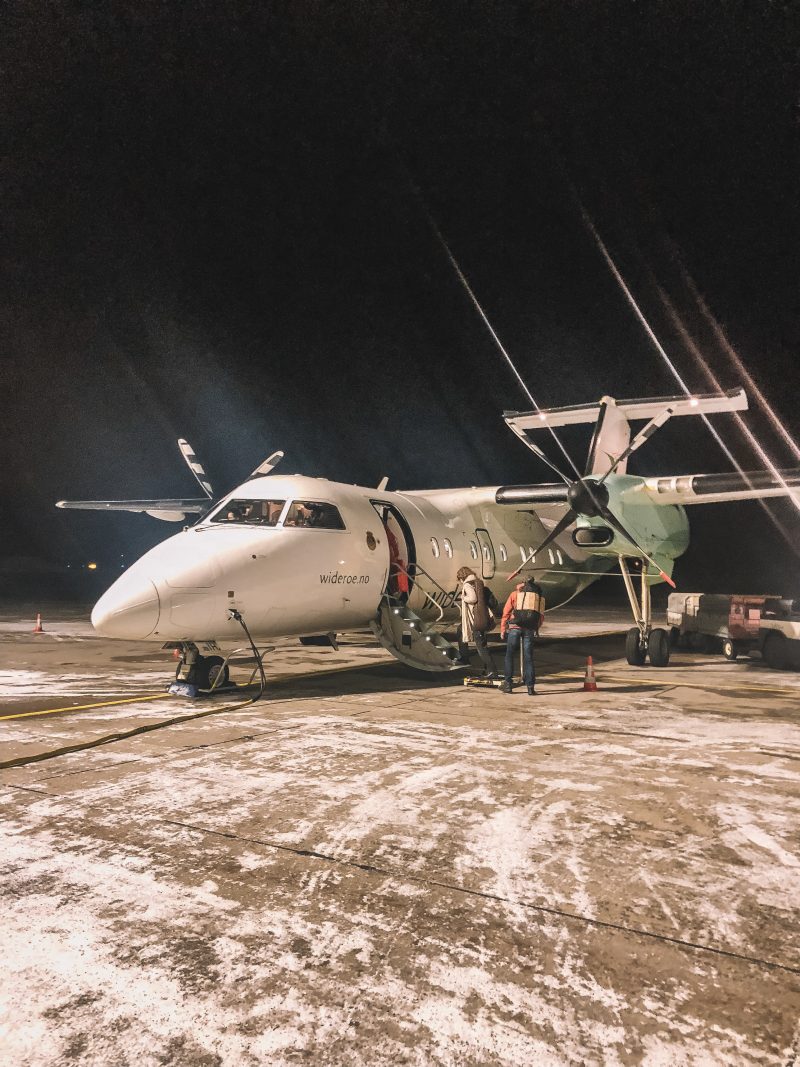
Lofoten Islands Day 1 – 2: Hov
Hov is one of the oldest places in Lofoten, and many historical monuments from ancient times have been found here. Hov is on the outside of Lofoten facing north, with almost no light pollution and no mountains that are blocking the view. It is the perfect place to see the Northern Lights! Like most places in Northern Norway, Hov is relatively low key. I recommend spending one or two days there: there are a number of activities you can do (daytime, nighttime, half day etc), also drive around and explore the untouched beauty!
Things to do:
- Lofotr Viking Museum– Lofotr Viking Museum in Borg features the largest Viking-era house ever found. (Prices Adult 170 NOK, Child (age 6-15) 130 NOK, Child (u. 6) Free, Senior/student 160 NOK)
- Northern Lights Horseback Riding – Ride on the white beaches, ride past ancient remnants from the Viking Age and visit a small fishing village. The ride is fairly slow paced. Icelandic horses are used because of their temperament and unique abilities on those terrains (their ancestors stem from the Viking Age & Norway). Price: NOK 950. The price includes a warm drink, and we provide head lamps and warm riding gloves. The prices also include free use of riding boots, helmets and outer garments. The staff is kind and knowledgable. Likewise, the horses are fantastic.

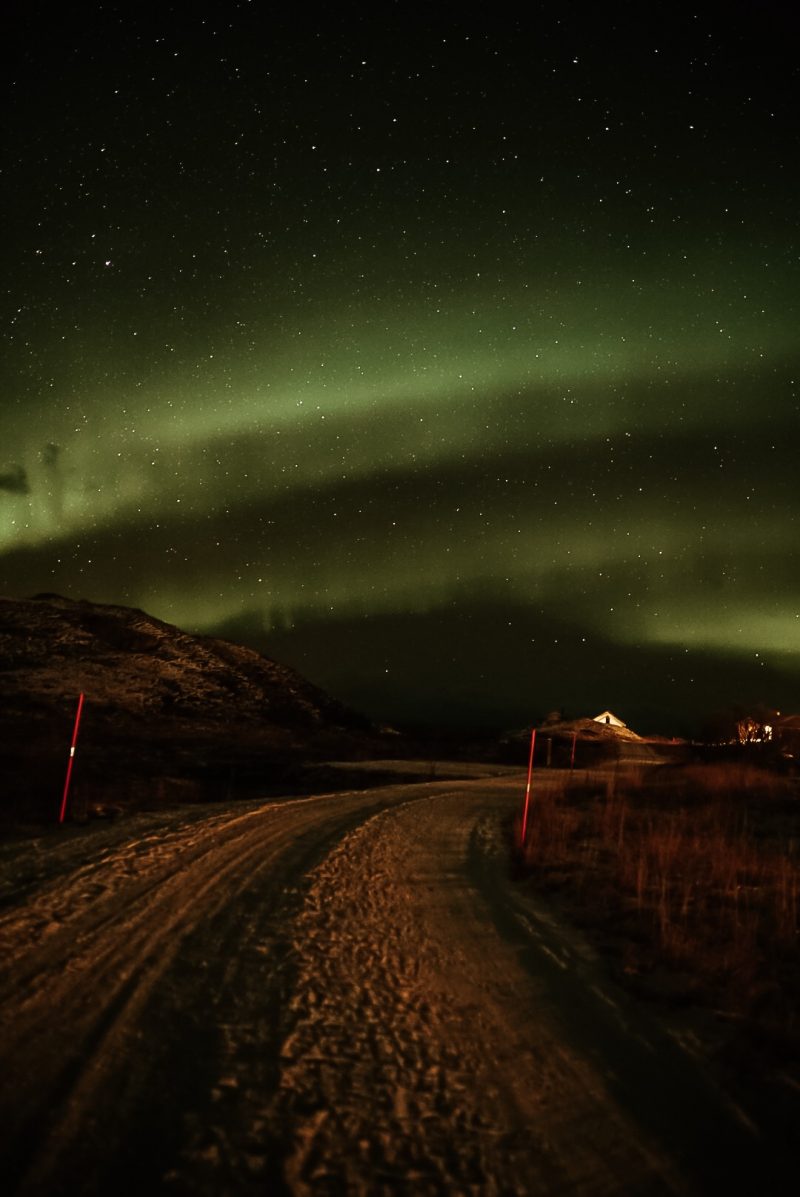
Where to Eat:
- Viking Dinner at Lofotr Museum– During your visit to the museum you can partake in a Viking feast where you will experience traditional singing, dancing and a delicious authentic meal!
- Låven at Hov • Hov Gård – Very cozy restaurant and coffee shop with spectacular views of the Sea (and northern lights). There is a large variety of local cuisine and an impressive wine/beer/drinks menu. This is the same venue where you can do various tours like the horseback riding.
Where to Stay:
- Lofoten Links Lodges – Lofoten Links Lodges are nested amongst the mountains and offer incredible views of the Sea. The lodges share a fully equipped kitchen, living room with a TV and a wood burning stove. Due to the little light pollution, there is a high chance you will see the Northern Lights just outside your window!


Lofoten Islands Day 3 – 4: Svolvær
Svolvær is the biggest city in Lofoten although still quite tiny by Norwegian standards, with a population of ~5,000. Svolvær is in arguably the most beautiful location I’ve ever seen, with tiny red fisherman cabins surrounded by massive snow capped mountains. Cod fisheries are vital to the economy of Lofoten and you won’t go far without seeing cod hung up on racks to dry. In fact, the World Cod Fishing Championships are held in Svolvær every March.
Things to do:
- Sea Eagle Safari + Trollfjord – This activity is simply NOT to be missed! Trollfjord is one of the most photogenic Fjord’s in Norway – set off on an adventure where you’ll be surrounded by massive mountains, cotton candy skies, and beautiful sea eagles. This tour is not only jaw dropping beautiful, but also very informative. In the winter it is very cold on the water. You will be given additional attire for the boat ride however, I strongly encourage you to bring body warmers as the high speeds of the boat will make it very cold and windy!
- Magic Ice – The world’s first permanent ice gallery. This ice gallery will bring you face to face with the fascinating history of Lofoten and its fishermen and Vikings. You will get a winter poncho and gloves to wear inside as well as a special signature drink served in an ice glass!

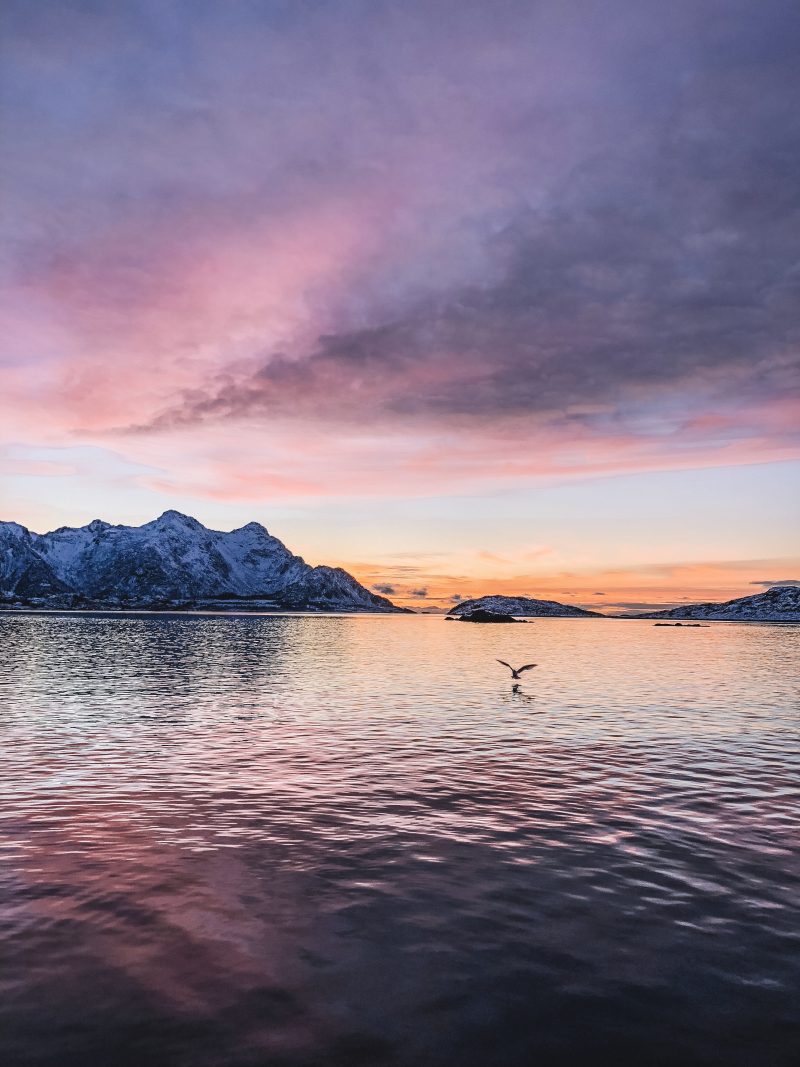
Where to Eat:
- Arctic Paleo– Arctic Paleo is located in the Thon Hotel right on the harbor – the ambience is that of an upscale lounge. Delicious local fish is prepared exquisitely. The restaurant’s philosophy is based on local and homemade food, like fresh fish delivered from local fishermen, whale meat, local cheeses and delicious meat from Lofoten lamb.*
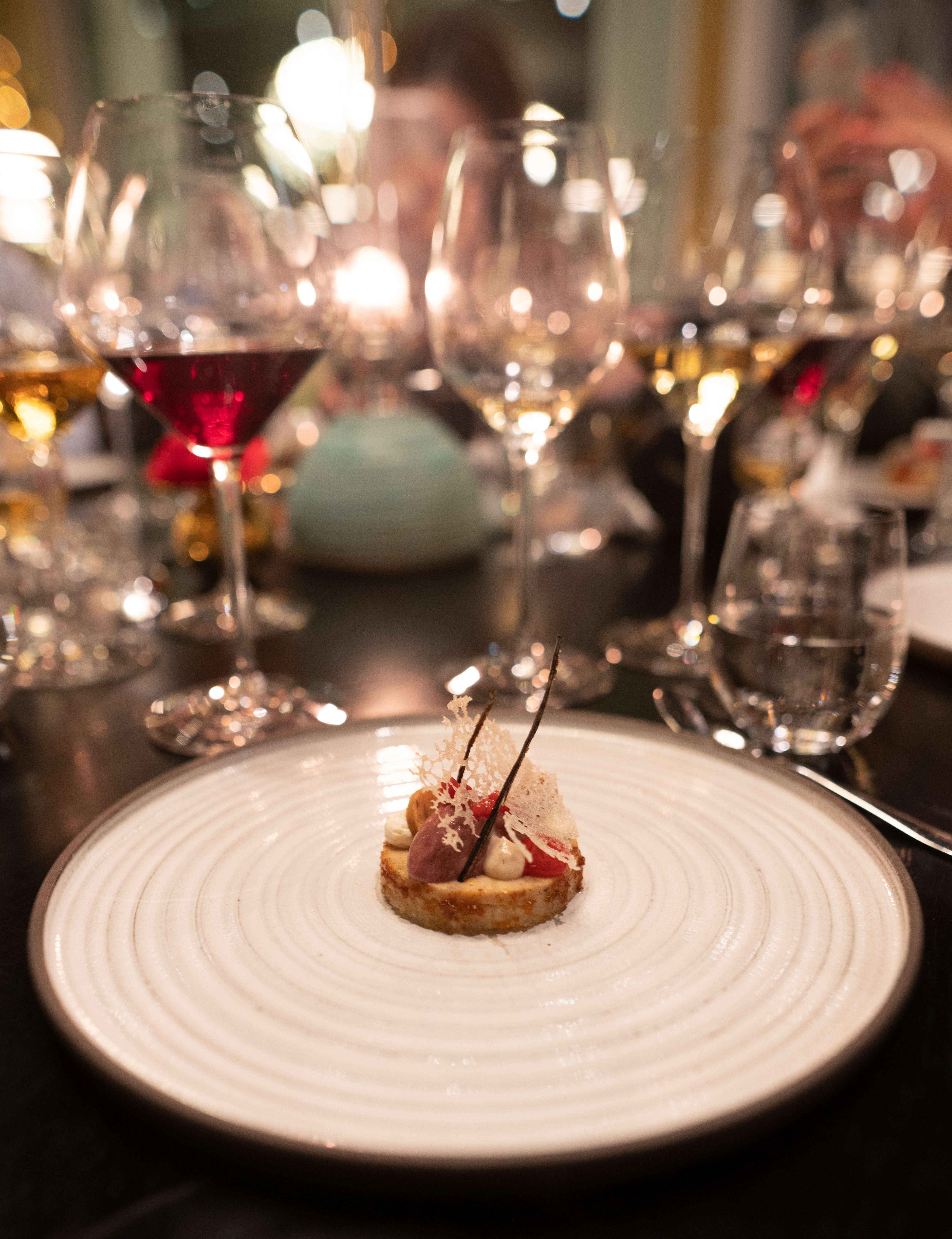
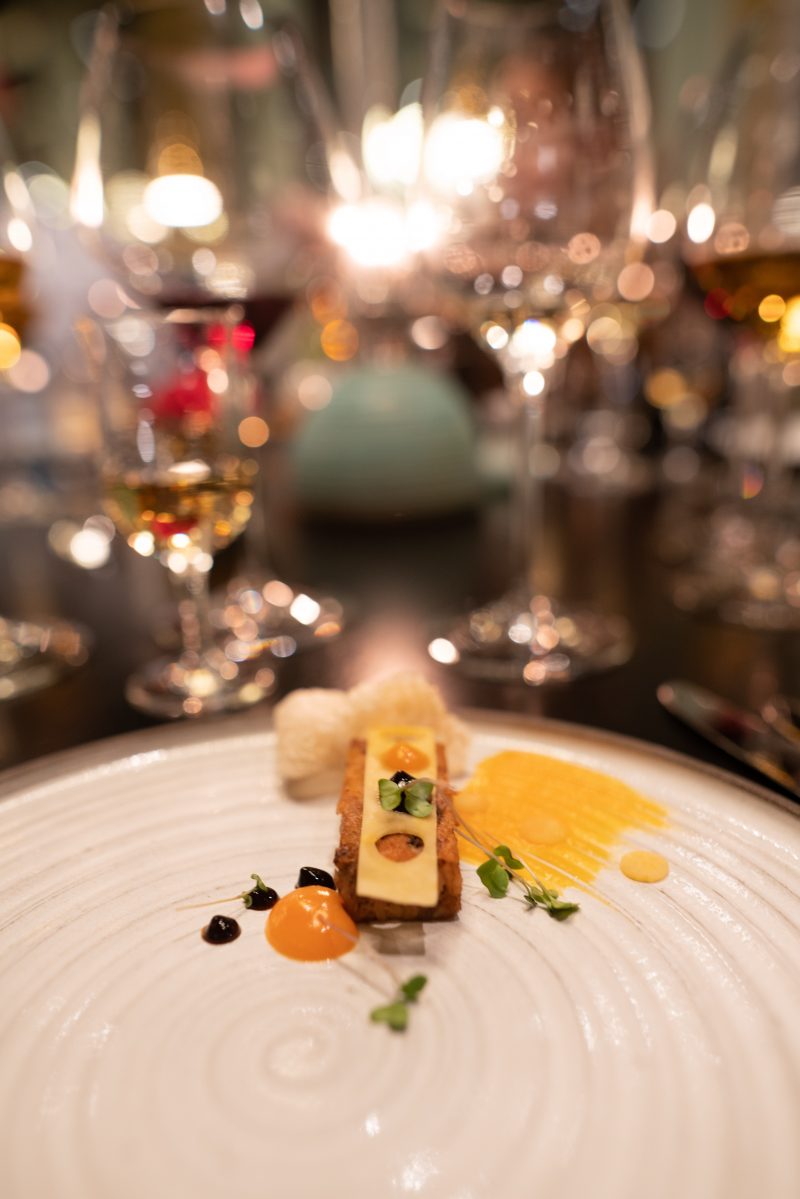
Where to Stay:
- Svinøya Rorbuer – Arguably the best property in Svolvær, Svinøya Rorbuer features original rorbu (fisherman cabins) located between the fish landing station, fish racks, and old local buildings. The cabins have from one to three twin bedrooms and are equipped with a kitchen and one or more bathrooms / showers. They are quite simple to maintain authenticity and that is what makes them truly special.

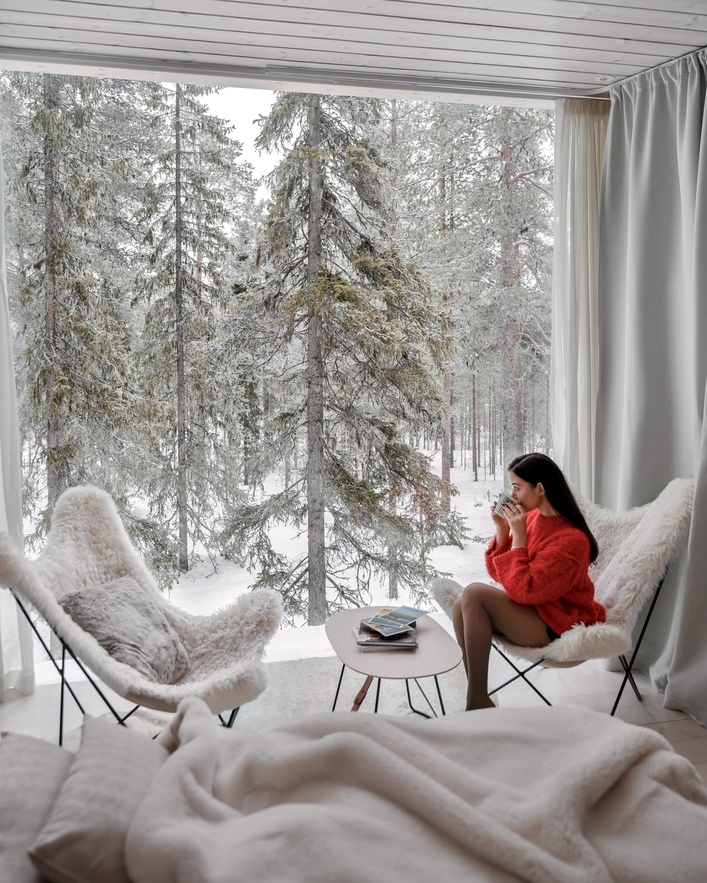
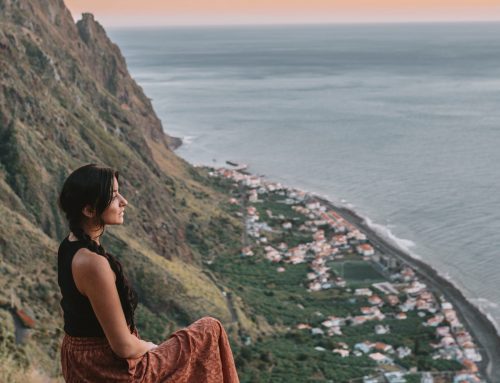
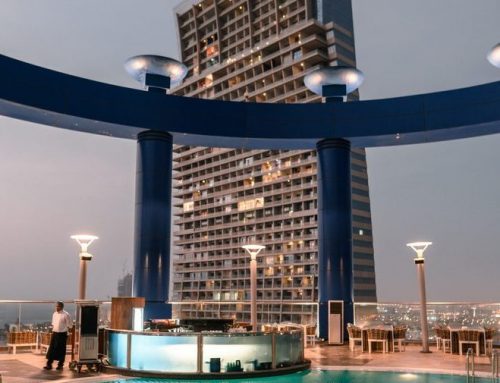
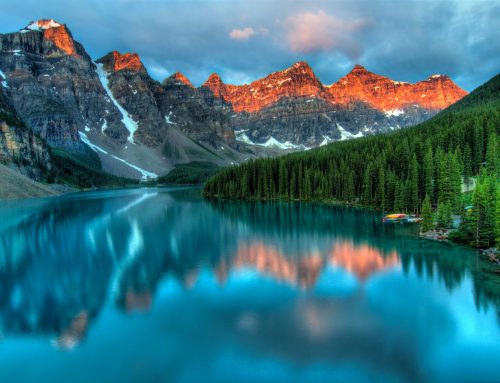
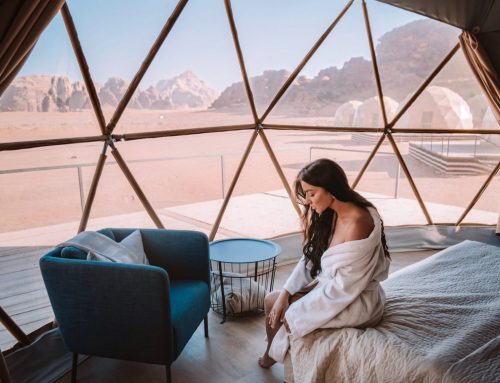
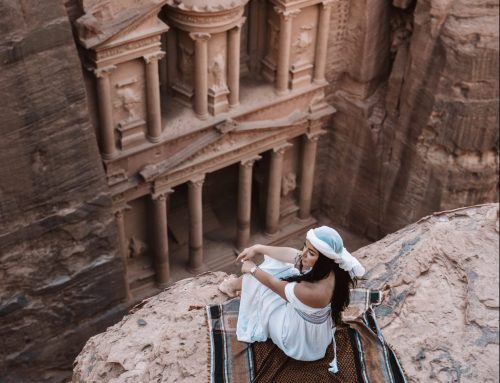
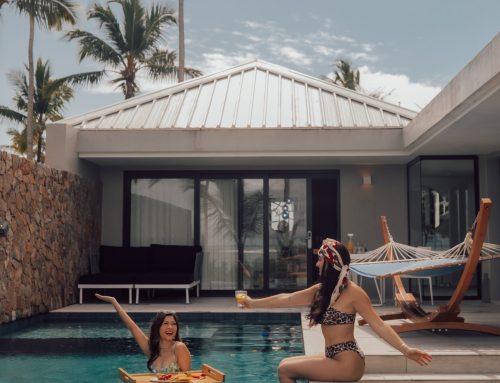
very cool 🙂
thanks!